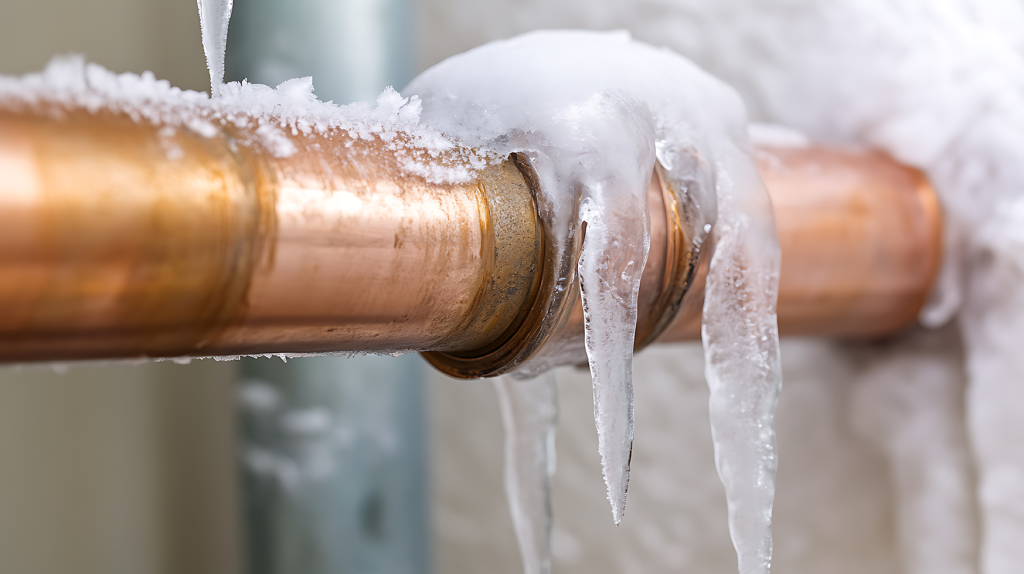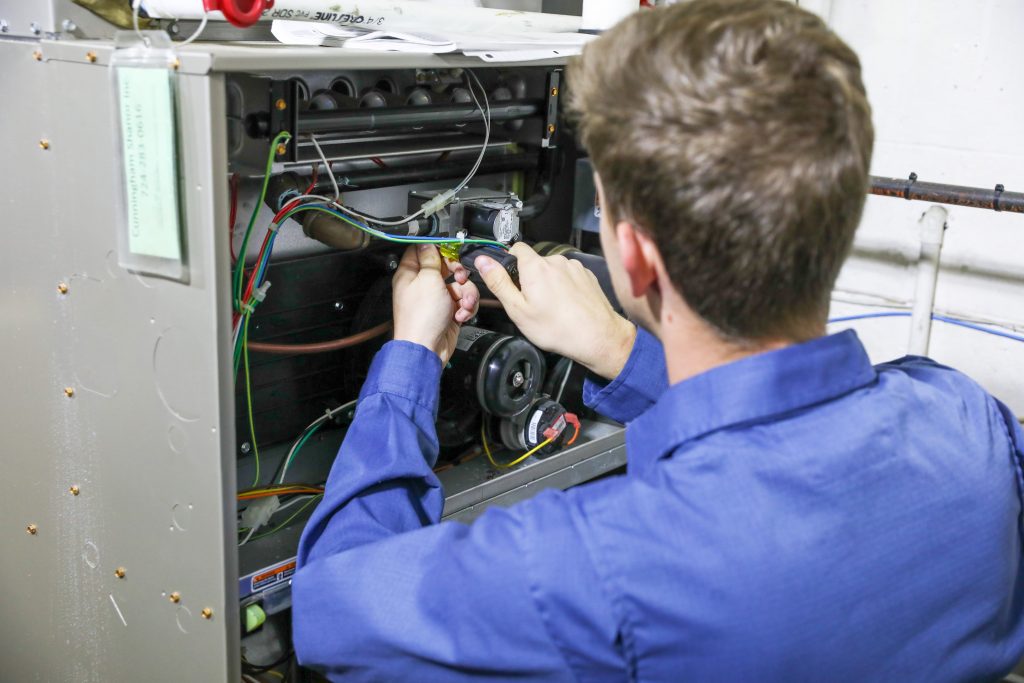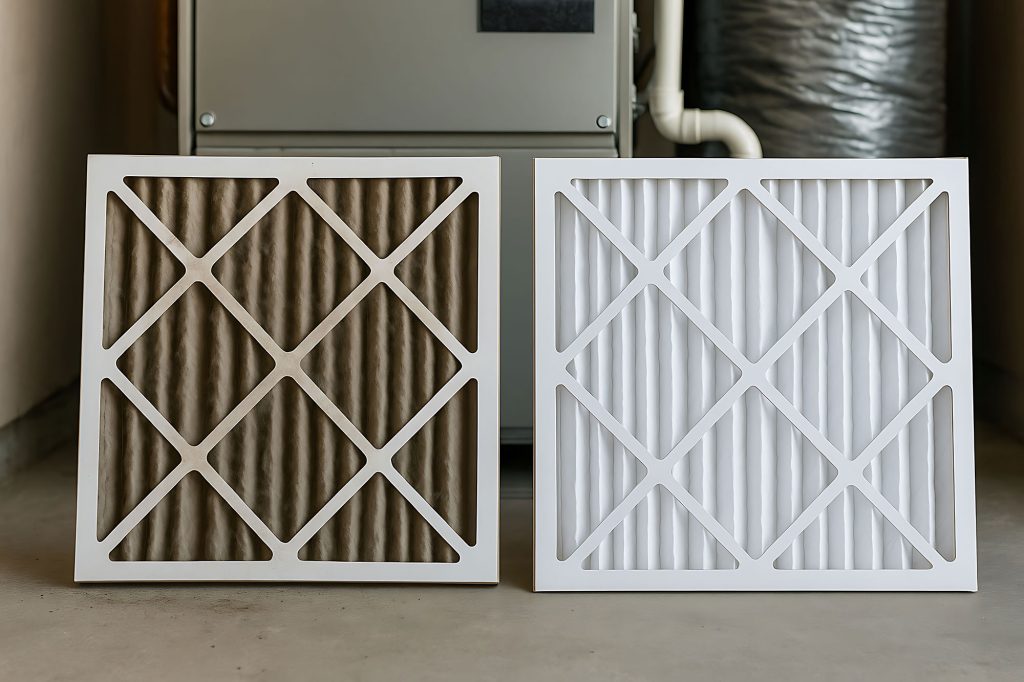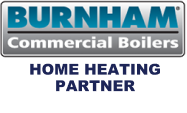When was the last time you thought about your HVAC filter? If you’re like most homeowners, it’s probably been a while. Yet this simple component plays a crucial role in your home’s comfort, air quality, and energy efficiency. The wrong filter size or type can strain your system, spike your utility bills, and leave your family breathing less-than-ideal air.
In this guide, we’ll walk you through everything you need to know about selecting the perfect filter for your HVAC system. You’ll learn how to measure for the right size, understand the different filtration levels available, and create a maintenance schedule that keeps your system running smoothly year-round.
Finding Your Filter Size: A Step-by-Step Guide
Check Your Current Filter
The easiest way to determine your filter size is to examine your existing filter. Look for dimensions printed on the cardboard frame, typically displayed as length × width × thickness (for example, 16″ × 25″ × 1″). These measurements are usually rounded to the nearest inch for simplicity.
Measure the Filter Slot
If you don’t have an existing filter or the dimensions are unclear, measure the filter slot directly. Use a tape measure to determine the length, width, and depth of the opening where the filter sits. Remember that the actual size might be slightly smaller than the nominal size listed on filters.
Consult Your HVAC Manual
Your system’s documentation will specify the recommended filter sizes. If you can’t locate the manual, check for a label inside the filter compartment or on the unit itself.
Common Filter Sizes
The most frequently used residential filter sizes include:
- 16″ × 20″ × 1″
- 16″ × 25″ × 1″
- 20″ × 20″ × 1″
- 20″ × 25″ × 1″
- 24″ × 24″ × 1″
Understanding Filter Efficiency Levels: MERV Ratings Explained
The Minimum Efficiency Reporting Value (MERV) rating system helps you understand how effectively a filter captures airborne particles. Higher MERV ratings indicate better filtration but may also restrict airflow more significantly.
MERV 1-4: Basic Filtration
These filters capture large particles like dust, pollen, and carpet fibers. They’re inexpensive but provide minimal air quality improvement. Best suited for systems that primarily need basic protection from large debris.
MERV 5-8: Standard Residential Filtration
This range offers good protection for most homes, capturing mold spores, pet dander, and smaller dust particles. MERV 8 filters strike an excellent balance between filtration efficiency and airflow, making them ideal for typical residential applications.
MERV 9-12: Superior Filtration
These filters capture smaller particles including fine dust, auto emissions, and some bacteria. They’re excellent for households with allergies or respiratory concerns, though they may slightly reduce airflow in older systems.
MERV 13-16: High-Efficiency Filtration
Hospital-grade filtration that captures smoke, bacteria, and viruses. While highly effective, these filters can significantly restrict airflow in residential systems and may require professional assessment before installation.
HEPA Filters
True HEPA filters remove 99.97% of particles 0.3 microns or larger. However, most residential HVAC systems aren’t designed to handle the airflow restriction these filters create, potentially causing system damage.
Choosing the Right MERV Rating for Your Home
Consider these factors when selecting your filter’s MERV rating:
For Basic Needs: MERV 6-8 filters work well for most homes without specific air quality concerns.
For Allergy Sufferers: MERV 10-12 filters provide excellent particle capture while maintaining reasonable airflow.
For Respiratory Issues: Consult with an HVAC professional about higher MERV ratings, as your system may need modifications to handle the increased restriction.
System Age Matters: Older systems may struggle with filters above MERV 8, while newer, high-efficiency systems can often handle MERV 11-13 without issues.
Filter Replacement Schedule: When to Change Your HVAC Filter
Regular filter replacement is crucial for maintaining system efficiency and indoor air quality. However, replacement frequency depends on several factors:
Standard Guidelines
- 1-inch filters: Replace every 1-3 months
- 4-inch filters: Replace every 6-9 months
- 5-6 inch filters: Replace every 9-12 months
Factors That Affect Replacement Frequency
Pet Ownership: Homes with pets should replace filters more frequently, typically every 1-2 months, due to increased pet dander and hair.
Allergy Sufferers: More frequent changes (every 30-45 days) help maintain optimal air quality for sensitive individuals.
Home Occupancy: More people in the home means more airborne particles and faster filter loading.
Local Air Quality: Areas with high pollen, dust, or pollution may require more frequent replacements.
Construction or Renovation: During any construction work, check and replace filters more frequently as dust and debris increase dramatically.
The Cost of Neglecting Filter Maintenance
Failing to maintain proper filtration can lead to serious consequences:
- Reduced Efficiency: Dirty filters force your system to work harder, increasing energy consumption by up to 15%.
- System Damage: Clogged filters can cause your system to overheat, potentially damaging expensive components like the blower motor or heat exchanger.
- Poor Air Quality: Old filters lose their effectiveness, allowing more pollutants to circulate through your home.
- Shortened System Lifespan: The extra strain from poor filtration can significantly reduce your HVAC system’s operational life.
Skip the Big Box Store Hassles—Order Your Filters Online
Tired of wandering the aisles of big box stores, trying to decipher confusing filter displays and hoping you’re grabbing the right size? We’ve all been there. You finally think you’ve found the perfect filter, only to get home and discover it doesn’t quite fit, or worse—it’s the wrong MERV rating for your system.
Shafer’s HVAC makes filter shopping simple with our convenient online ordering system. Browse our extensive selection of high-quality filters by manufacturer, size, and MERV rating, all specifically chosen for optimal performance. With detailed product descriptions and sizing guides, you can order with confidence, knowing you’re getting exactly what your system needs.
Not sure where to start? We recommend PremierOne HVAC filters. Engineered for superior airflow and long-lasting performance, PremierOne filters offer advanced filtration that captures more dust, allergens, and airborne particles than standard filters. Their durability and high efficiency make them a favorite among homeowners and HVAC pros alike. At Shafer’s HVAC, we trust PremierOne to deliver cleaner air—and peace of mind.
Take the Guesswork Out of HVAC Maintenance
Proper filter selection and maintenance are just one part of keeping your HVAC system running efficiently. While changing filters is something most homeowners can handle, ensuring your entire system operates at peak performance requires professional expertise.
Ready to optimize your home’s comfort and efficiency?
Shafer’s HVAC offers comprehensive maintenance plans designed to keep your system running smoothly year-round. Our experienced technicians will not only ensure you’re using the right filters for your specific system but also perform thorough inspections, cleanings, and tune-ups that prevent costly breakdowns and maximize energy efficiency.
With a Shafer’s HVAC maintenance plan, you’ll enjoy priority scheduling, discounted repairs, and the peace of mind that comes from having your system professionally maintained by certified experts. Don’t wait for problems to arise—contact Shafer’s HVAC today to learn more about our maintenance plans and schedule your system evaluation. Your comfort and your wallet will thank you.








